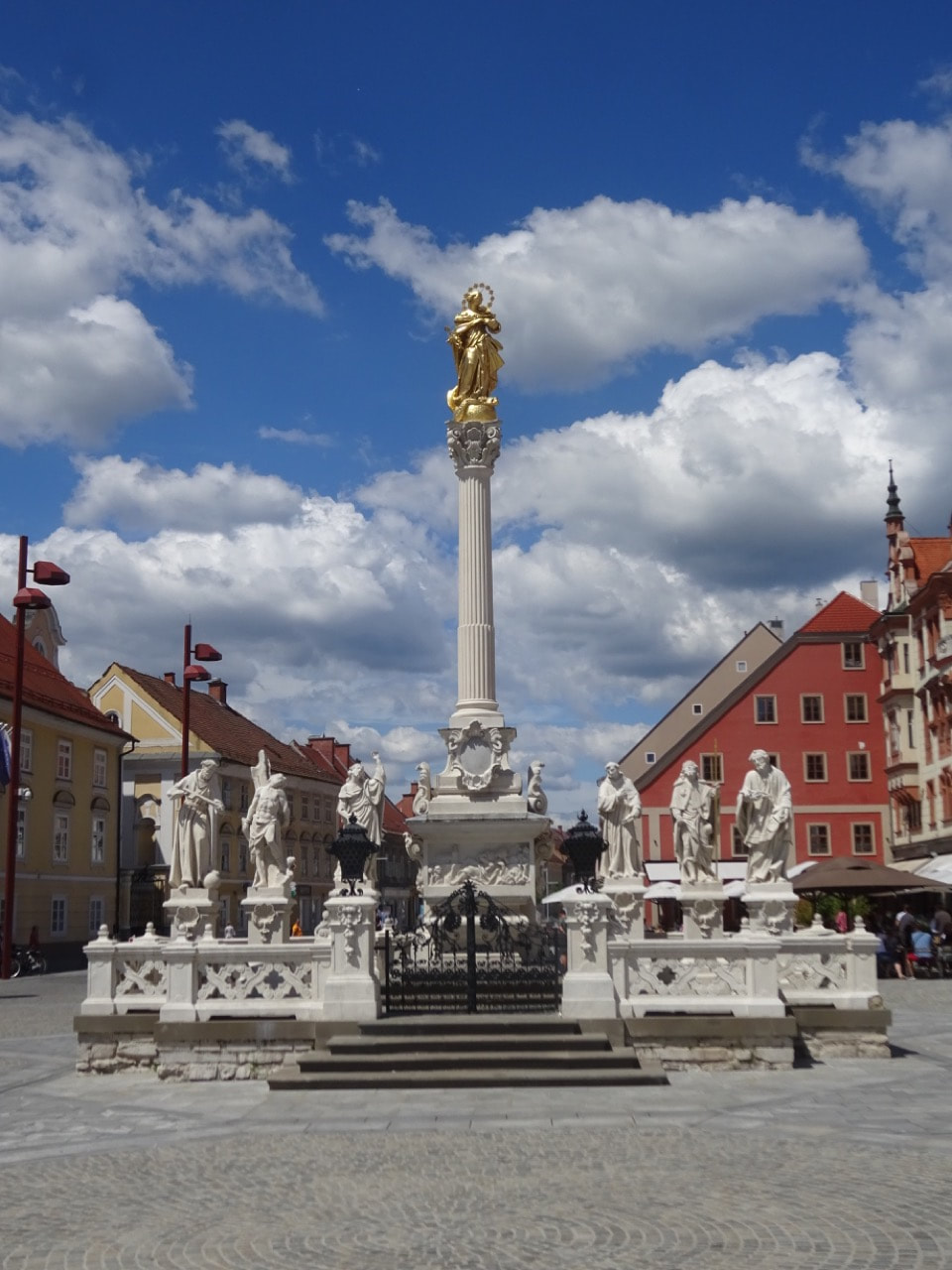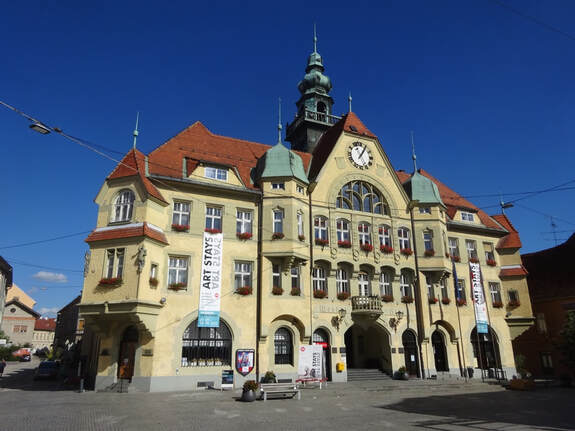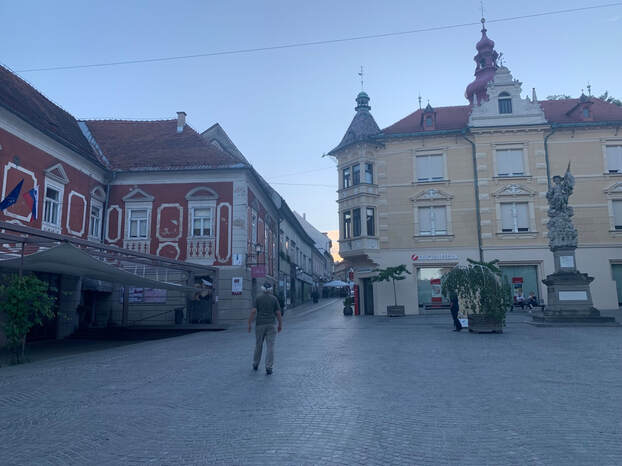Working our way generally east, we visit Maribor for a few hours. For a good bit of the 50 miles we travel along the Drava River, a 440-mile tributary of the Danube.
It's a Hoppy river.
Just how we like it, light traffic and blue skies.
The Drava River is one of the most exploited rivers in the world in terms of hydropower, with almost 100% of its water potential energy being exploited.
The Franciscan Church of St Mary Mother of Mercy is seen after we park in a nice modern parking ramp.
Monument to Yugoslav freedom fighters who were executed by Nazis during WWII.
Nice day for a bike ride.
Although it looks like a city hall, this is Maribor Castle, from the 15th century AD.
Main Square with Maribor Town Hall and the Plague Column, and friendly little fountain.
"The Plague Column was erected by "pious burghers" in gratitude for the end of a 1680 plague epidemic that took a third of the city's population. The original monument was built in 1681. The current one is a 1743 replacement and one of the best examples of baroque art in Slovenia."
Part of the old walled city - the tower to the left is the Jewish synagogue
Now in Ptuj (it's pronounced as "Puh-Tooey"). Ptuj, the oldest recorded city in Slovenia, has been inhabited since the late Stone Age and further developed from a Roman military fort. Ptuj was located at a strategically important crossing of the Drava River, along a prehistoric trade route between the Baltic Sea and the Adriatic.
Town Tower and Theatre:
Ptuj castle was built in the mid-12th century, when it was constructed to defend against the Hungarians.
The castle's high perch provides some good views of old Ptuj.
The entrance gate - we pass it for now to check out some cultural history in an adjacent building next to it.
Ptuj is the center place of a ten-day-long carnival in the spring, an ancient Slavic pagan rite of spring and fertility, called Kurentovanje or Korantovanje. Kurent is believed to be the name of an ancient god of hedonism - the Slavic counterpart of the Greek god Priapos, although there are no written records.
Kurent or Korant is a figure dressed in sheep skin who go about the town wearing masks, a long red tongue, cow bells, and multi-colored ribbons on the head. The Kurent(s) from Ptuj and the adjoining villages also wear feathers, while those from the Haloze and Lancova Vas wear horns. Organized in groups, Kurents go through town, from house to house, making noise with their bells and wooden sticks, to symbolically scare off evil spirits and the winter.
Kurent or Korant is a figure dressed in sheep skin who go about the town wearing masks, a long red tongue, cow bells, and multi-colored ribbons on the head. The Kurent(s) from Ptuj and the adjoining villages also wear feathers, while those from the Haloze and Lancova Vas wear horns. Organized in groups, Kurents go through town, from house to house, making noise with their bells and wooden sticks, to symbolically scare off evil spirits and the winter.
Now on to the castle - here's how it looked to a painter back in 1687.
In the courtyard - our paid admission lets us tour the interiors with some interesting artifacts.
The legend of Saint George and the Dragon tells of Saint George (died in 303 AD) slaying a dragon that demanded human sacrifices.
An awesome dragon chandelier.
Modern art installation - videography stuff.
And a small music museum...
The castle tour is complete.
Ptuj Town Hall
1280 AD Monastery of St. Peter and Paul - the Minorite Monastery in Ptuj is a Roman Catholic monastery located at the end of the old town center on Minorit Square .
A local wine cellar...
The cellar was closed, so we found Kavarna Bodi cafe nearby, which is a large laid-back artsy place selling about anything one would want to drink (water, beer, wine, coffee, cocktails, iced teas). We tried the Haložan white wine - inexpensive and refreshing - semi-dry blend of four whites.
Time to find some eats.



























































 RSS Feed
RSS Feed
